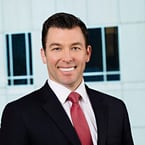Welcome to “The Week Ahead” where we take a moment to provide our thoughts on what we can expect in markets and the economy during the upcoming week.
Most people are familiar with the term: “canary in a coal mine." It is used quite often in the investments industry as we are always looking for evidence of the next downturn. Of course, this idiom comes from a time long past where coal miners would bring small, caged birds into the mineshaft to help determine if there was a buildup of carbon monoxide – an odorless, poisonous gas. If the birds started dying off, it was a tell-tale sign that it was time to make a rapid exit.
Probably the most common “canary” we look at is the yield curve. Specifically, the difference between the short-term interest rate and 10-year yield for Treasuries. Under a normal economic backdrop, one would expect to receive a greater yield for a longer maturity bond as there is inherently more risk in longer duration bonds. When short-term interest rates exceed long-term, this is known as an inverted yield curve. Under this scenario, bond investors want to lock-in long-term yields, as they believe a recession is looming, which will cause the Federal Reserve (Fed) to cut interest rates in an effort to stimulate economic growth. This harbinger of recession has had a perfect record, so it is not to be taken lightly.
Right now, the yield curve is steepening as the 10-year Treasury yield has been increasing; however, as the Fed continues its campaign of crushing growth to mitigate inflation, the short-term part of the curve will continue to move higher. If longer-term yields do not keep pace, it is a strong indicator that bond investors are predicting recession. The Fed obviously does not want a recession, so they will likely slow their interest rate hikes if the “canary” starts to swoon. Nevertheless, they cannot allow inflation to continue at an 8% pace - the highest level in 40-years.
Other recession indicators (“canaries”) continue to show resilience. Business confidence is strong. To wit, capital expenditures and bank lending are accelerating. The Consumer Comfort survey points to further economic reopening as the fallout from the pandemic recedes. Despite very negative sentiment, the consumer continues to spend - buoyed by a strong labor market and large cash hoard ($2 trillion of excess savings) created during the shutdowns. Commodity prices and supply chain strains both show initial signs of moderating. While on balance, the “canaries” indicate no recession, we will continue to keep a sharp eye on them.
This is an extremely busy week for economic news. It is the first week of the month and the Purchasing Managers' Index (PMI) and employment data will capture the bulk of the market's attention. The PMI – an indicator of economic growth should be essentially unchanged at a healthy print of 58.5. Vehicle sales appear better and likely rebounded to 14.6 million. We estimate payroll employment rose 500K. The unemployment rate probably fell to 3.6% and average hourly earnings rebound +0.9%.
Data deck for March 28 – April 1:
|
Date |
Indicator |
Period |
|
Mar 28 |
Trade in goods, advance report |
Feb |
|
Mar 29 |
Case-Shiller national house price index (year-on-year) |
Jan |
|
Mar 29 |
FHFA national house price index |
Jan |
|
Mar 29 |
Consumer confidence index |
Mar |
|
Mar 29 |
Job openings |
Feb |
|
Mar 29 |
Quits |
Feb |
|
Mar 29 |
Philadelphia Fed President Patrick Harker speaks |
|
|
Mar 29 |
Atlanta Fed President Raphael Bostic speaks |
|
|
Mar 30 |
ADP employment report |
Mar |
|
Mar 30 |
GDP revision (SAAR |
Q4 |
|
Mar 30 |
Gross domestic income (SAAR) |
Q4 |
|
Mar 30 |
Corporate profits (year-on-year) |
Q4 |
|
Mar 30 |
Richmond Fed President Tom Barkin speaks |
|
|
Mar 30 |
Kansas City Fed President Esther George speaks |
|
|
Mar 31 |
Initial jobless claims |
Mar 26 |
|
Mar 31 |
Continuing jobless claims |
Mar 19 |
|
Mar 31 |
Nominal personal income |
Feb |
|
Mar 31 |
Nominal consumer spending |
Feb |
|
Mar 31 |
PCE price index |
Feb |
|
Mar 31 |
Core PCE price index |
Feb |
|
Mar 31 |
Core PCE price index (year-on-year) |
Feb |
|
Mar 31 |
Real disposable income |
Feb |
|
Mar 31 |
Real consumer spending |
Feb |
|
Mar 31 |
Chicago PMI |
Feb |
|
Apr 1 |
Nonfarm payrolls |
Mar |
|
Apr 1 |
Unemployment rate |
Mar |
|
Apr 1 |
Average hourly earnings |
Mar |
|
Apr 1 |
Labor-force participation rate, ages 25-54 |
Mar |
|
Apr 1 |
Chicago Fed President Charles Evans speaks |
Mar |
|
Apr 1 |
Markit manufacturing PMI (final) |
Mar |
|
Apr 1 |
ISM manufacturing index |
Mar |
|
Apr 1 |
Construction spending |
Feb |




